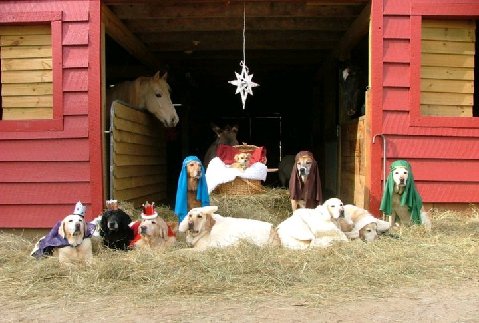|
Oíche chiúin, oíche Mhic Dé,
Cách 'na suan, dís araon,
Dís is dílse ag faire le spéis,
Naí beag gnaoi-gheal ceanán tais caomh
Críost ina chodladh go séimh,
Críost ina chodladh go séimh.
Oíche chiúin, oíche Mhic Dé,
Aoirí ar dtús chuala an scéal,
"Aililiuia" aingil ag glaoch
Cantain Shuairc i ngar is i gcéin
Críost ár Slánaitheoir féin,
Críost ár Slánaitheoir féin.
Oíche chiúin, oíche Mhic Dé,
Mac Dé bhí, gáire a bhéil,
Tuar dá rá 's dá lán-chur i gcéill,
Ann gur tháinig tráth chinn a tséin,
Críost a theacht ar an saol,
Críost a theacht ar an saol.
|
Silent night, night of God's son.
Soundly in slumber, the pair together,
The pair and love, watching with affection,
The small bright beautiful child Darling one
Christ, calmly asleep,
Christ, calmly asleep.
Silent night, night of God's son.
Shepherds first heard the tale,
The angels crying out Alleluia.
Lovely chanting near and far.
Christ, the saviour himself,
Christ, the saviour himself.
Silent night, night of God's son.
God's Son with a smile on his face
A sign spoken to be fully understood
The sweet voice of an angel heard in the air
Christ is coming into the world,
Christ is coming into the world.
|

![]()
![]()
 The carol was first performed in the Nikolaus-Kirche (Church of St. Nicholas)
in Oberndorf, Austria, on December 24, 1818. Mohr had composed the words two years
earlier, in 1816, but on Christmas Eve brought them to Gruber and asked him to compose a
melody and guitar accompaniment for the Midnight Mass.
The carol was first performed in the Nikolaus-Kirche (Church of St. Nicholas)
in Oberndorf, Austria, on December 24, 1818. Mohr had composed the words two years
earlier, in 1816, but on Christmas Eve brought them to Gruber and asked him to compose a
melody and guitar accompaniment for the Midnight Mass.
